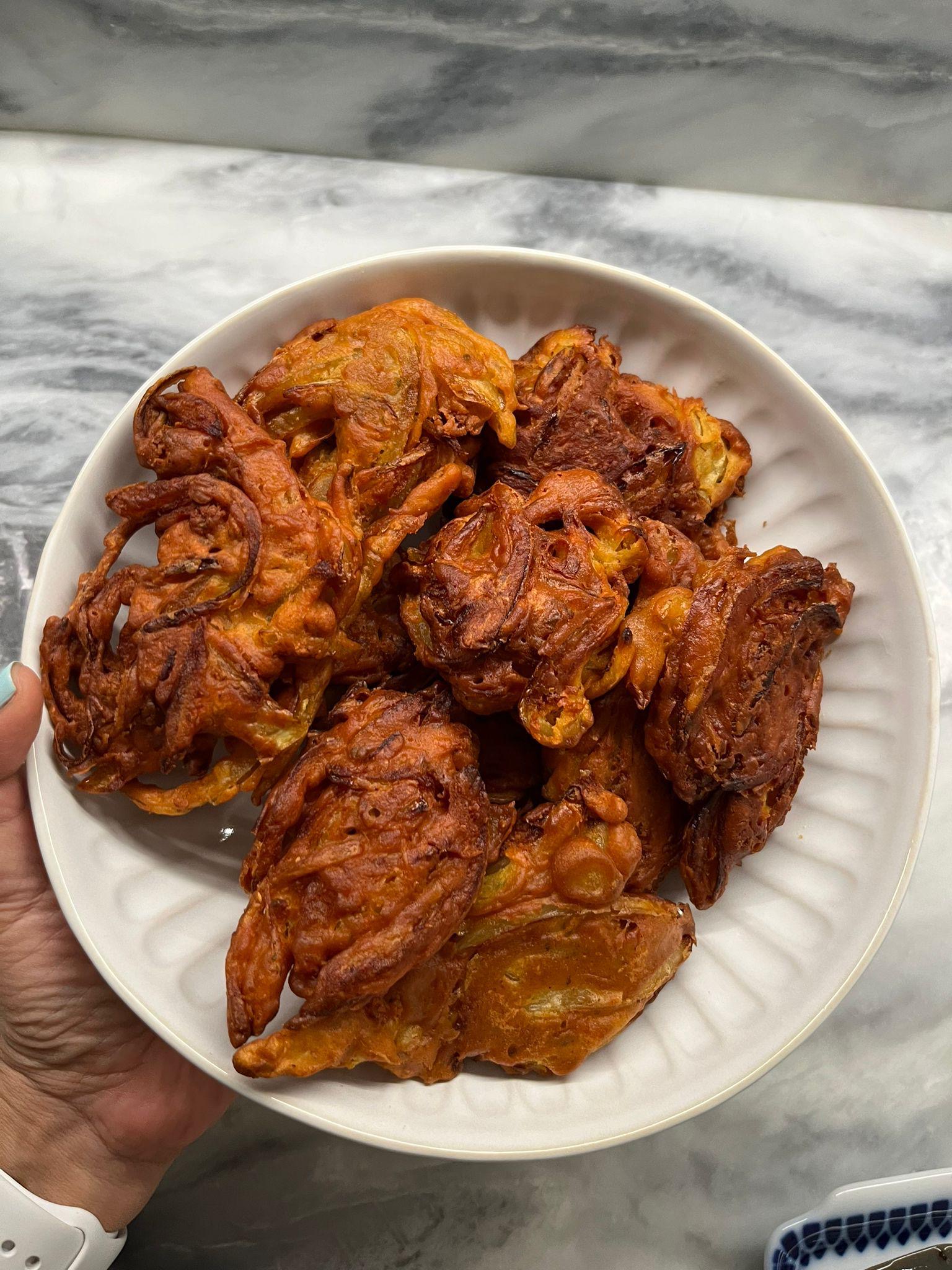May is Jewish Heritage Month and Asian American and Pacific Islander Heritage Month. For the Meyer-Fong family, this is a natural convergence. Like many, over the pandemic, Dr. Meyer-Fong spent time in the kitchen. Some of her culinary experiments brought Chinese and Jewish holiday customs into the conversation. Ahead of Shavuot, she shared two special recipes with us, one that will sweeten the holiday and the other that highlights the inspiration she has drawn from Chinese flavors.
When I was very young, my mother occasionally made challah using a recipe shared in my sister’s Hebrew school class. Those fluffy, glutinous loaves imprinted in my imagination as the ultimate challah experience. My mother did not make challah often. But whenever friends tried her homemade challah, they declared it the best and requested the recipe. She included it prominently in the book of handwritten family and friend recipes that she collected for Ming-Yuen and me as a wedding gift more than 25 years ago. In the months leading up to Saul’s Bar Mitzvah, she and I baked 12 loaves of challah for the 12 tables and 12 tribes using her recipe, stored them in her freezer, and served them at the Bar Mitzvah lunch.
Early in 2020, just before the pandemic, we had a challah crisis in the neighborhood. The bakery that reliably made the best loaf closed suddenly. That first week, there was no challah to be had at five o’clock on a Friday. After that, I tried the various alternatives, and none of them satisfied. I launched a new habit of weekly baking, made possible by the new necessity of working from home. At first, I diligently followed my new favorite recipe from the Israeli cookbook, Sababa, given to me for my birthday by my cousin Oded and his husband, Michael. My mother’s recipe required three rises and yielded one loaf. This one made three loaves with two rises. The texture and flavor were roughly equivalent. The rhythm of the two rises structured my Fridays, and I could give the extra loaves to friends and family. I decided to make challah every week. I’ve only missed two or three weeks in the past two years.
With months of practice, the recipe became routine. I memorized it. Then I started tinkering. Minor modifications at first, followed by significant modifications. Some variations, like “Sichuan Everything Challah” (a Chinese twist on the Everything Bagel theme), drew inspiration from my Chinese food for Jewish holidays experiments. Others, like “Sweet Orange Challah,” resulted from fortuitous kitchen coincidences (Saul was making orange cream puffs while I was baking challah—the results were revelatory).
Shavuot celebrates the summer grain harvest and the revelation of the Torah at Sinai. The honey and oranges remind us of Torah: sweet and fruitful, and fragrant. Scallions, Sichuan peppercorns, and chili peppers stimulate the mind and the tongue. For Shavuot, then, enjoy the challah variations: Sweet Orange and “Sichuan Everything.” The base recipe originated in Adeena Sussman’s Sababa: Fresh Sunny Flavors from My Israeli Kitchen (2019).
Sweet Orange Challah
Orange Syrup:
A coil of peel from one orange (as used for candied orange peel)
½ c. water
½ c. granulated sugar
Main Recipe:
1 ¾ c. warm water
6 teaspoons yeast
1 tablespoon granulated sugar
7 c. flour (plus some for kneading and adjustment)
1 tablespoon salt
1/3 c. olive oil
1/3 c. honey
3 eggs
½ c sugar
Zest from 2-3 juice oranges (Valencia juice oranges are especially fragrant)
Sea salt to sprinkle on top of the loaves
In the large bowl of a stand mixer, combine warm water with 1 T granulated sugar. Sprinkle in yeast. Let sit for 5 minutes to let the yeast activate. Add flour, salt, olive oil, honey, sugar, orange zest, and 2 eggs to the mixing bowl. Use dough hook to mix and then knead for 5 minutes (it is fine to use the mixer to do this).
Sussman suggests kneading by hand and pulling pieces off the dough and shoving them into the center, 15 times, rotating, to make the dough flexible and stretchy. I sometimes do this—but I have not noticed a big difference in the resulting texture and recently have been skipping this step to save time. There is something oddly satisfying, however, about hand kneading and pulling off pieces of dough and shoving them into the center. But this is more about the baker than the bread.
Cover the bowl with a damp towel and let rise for an hour or until roughly doubled in bulk.
While the bread rises, make the orange syrup. Place the orange peel, sugar, and water in a small saucepan. Boil, occasionally stirring, until the syrup thickens and tastes deliciously of orange.
Divide the risen dough into three equal parts. Divide each of the three parts into three, form strands, and braid them into three challahs. Place the challahs onto two parchment-covered cookie sheets.
Preheat oven to 405
Cover and allow to rise in a warm place for another 45 minutes to an hour (I do this on top of the stove while my oven preheats).
Beat the third egg in a small bowl. Use a pastry brush to apply the egg to the challahs. Sprinkle a pinch of sea salt on top of each of the three challahs.
Bake the challahs at 405 for 11 minutes on the top and middle racks of your oven. At 11 minutes, switch the middle to the top and vice versa, reversing the directions also of your cookie trays front to back. Bake for 6-7 more minutes.
When the challahs come out of the oven, use the pastry brush to drizzle orange syrup into the unglazed crevices of the braids and allow to soak into the bread.
Sichuan Everything Topping:
¼ c. sesame seeds
2t crushed chili peppers
2t Sichuan peppercorns
Coarse sea salt to taste
Main Recipe:
1 ¾ c. warm water
6 teaspoon yeast
1 tablespoon granulated sugar
7 c. flour (plus some for kneading and adjustment)
1 tablespoon salt
1/3 c. sesame oil
1/3 c. honey
3 eggs
½ c sugar
5 scallions, greens only, finely chopped
Course salt to taste
In the large bowl of a stand mixer, combine warm water with granulated sugar. Sprinkle in yeast. Let sit for 5 minutes to let the yeast activate. Add flour, salt, sesame oil, honey, sugar, and 2 eggs to the mixing bowl. Use dough hook to mix and then knead for 5 minutes (it is fine to use the mixer to do this).
Cover the bowl with a damp towel and let rise for an hour or until roughly doubled in bulk.
While the bread rises, make the Sichuan Everything topping. In a wok or cast-iron skillet, lightly toast the sesame seeds until golden. Put into a jar. Lightly toast the crushed chili flakes (or pieces of dried chili peppers and the Sichuan peppercorns. Add to the jar. Toss with sesame seeds and coarse sea salt to taste.
Divide the risen dough into three equal parts. Divide each of the three parts into three. Cut one of the parts into three parts. Form these pieces into three strands. Flatten the strands using a rolling pin. Sprinkle the surfaces (using 1/9 of the scallions for each of the first three strands). Coil, so that the scallions are rolled into the strands. Braid the first challah. Repeat for the remaining two. Place the challahs onto two parchment covered cookie sheets.
Preheat oven to 405
 Cover and allow to rise in a warm place for another 45 minutes to an hour (I do this on top of the stove while my oven preheats).
Cover and allow to rise in a warm place for another 45 minutes to an hour (I do this on top of the stove while my oven preheats).
Beat the third egg in a small bowl. Use a pastry brush to apply the egg to the challahs. Sprinkle “Sichuan Everything Topping” on top of each of the three challahs.
Bake the challahs at 405 for 11 minutes on the top and middle racks of your oven. At 11 minutes, switch the middle to the top and vice versa, reversing the directions also of your cookie trays front to back. Bake for 6-7 more minutes.








